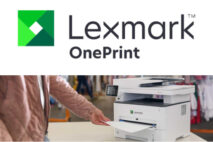Lexmark announced that it would sell its inkjet business to Funai Electric on April 1, 2013 (see “Lexmark Will Pocket $100 Million on Sale of Inkjet Business to Funai”). While this coincides with the start of Funai’s fiscal year, it struck me as appropriate that the announcement came on April Fools’ Day. The market reacted not at all, but several analysts seemed to think it represented a good deal for both companies and a way forward for the company’s thermal inkjet technology. Instead, in this analyst’s view, the fact that Lexmark was willing to take a mere $100 million for the business signifies a few things: (a) there were not a lot of other potential buyers, (b) if there is a big winner in this transaction it is Funai, which should be able to recoup its investment relatively quickly, and (c) Funai’s winnings may be temporary because Lexmark’s inkjet patent portfolio has little value and the firm’s aging inkjet technology is not likely to enable Funai to successfully break into a mature market, at least not without heavy investment.
The sale price of $100 million sounds like a great deal of money, but just three years ago, this was a billion-dollar business. To put the sale price into perspective, let’s examine just the ongoing inkjet supplies aspect of the sale: Funai will supply Lexmark-branded inkjet cartridges to Lexmark for as long as sufficient demand exists. Lexmark estimates that its sales of inkjet supplies will be about $400 million this year, $200 million next, and less than $100 million in 2015. Based on common industry estimates, the manufacturing cost of the supplies for 2013 would likely be less than $150 million and the transfer price to Lexmark about $250 million. Since the deal didn’t close until the end of the first quarter, Funai will thus realize about $75 million in profit in calendar 2013 and $25 million in the first half of 2014. That will give Funai a 15-month payout of the selling price, and the company should realize a further $50 million in profit by the end of 2015.
And Funai also received all of the shares of Lexmark’s Philippines supplies-manufacturing operation, including the land, building, equipment, and staff, as well as all of Lexmark’s inkjet patents. That the selling price is so low in comparison to the size of the ongoing supplies business doesn’t seem to bode well for the future of the technology, which is in need of heavy investment. Funai has signaled limited investment by leasing about 60 Lexmark engineers, who will use existing U.S. R&D facilities, but nothing on the scale that a competitive single-pass system would require.
Lexmark’s Vizix technology represented a big step forward for its desktop printers, but little in its patent portfolio suggests that the company was moving toward fixed, single-pass print heads like those developed by HP and Memjet for an array of emerging high-speed applications. Perhaps the technology could be adapted for this use, but bear in mind that HP spent $1.4 billion and Memjet over $700 million in developing their highly integrated thermal print heads. Funai would have to invest a substantial fraction of that to enter the single-pass market for business inkjet, large-format, and commercial printing.
Of course, Funai now has facilities to manufacture both printers and supplies and could enter the market with its own desktop printers. In fact, the firm has stated that is its intent. However, the desktop inkjet market is in decline worldwide—witness the exits of Lexmark, Kodak, and Olivetti in recent months. Brother, Canon, Epson, HP and a few others are battling over the scraps already.
Don’t be surprised to see the story end with the wind-down of the Lexmark inkjet supplies business.







4 Comments
Office and consumer inkjet markets are shrinking. Thanks to tablets and social media, consumer printing declines. Like Microsoft Windows based PC, replacement cycles have been lengthened. They are viewed as common tools which will not be replaced until they are broken rather than as high tech tools to enhance productivities thus require to upgrade constantly. Bottom line – consumer and office inkjet printers become PC like.
Not to mention, prices of color laser printers drop like stone – some color laser is only $99. By nature, laser toner carry far higher pigment than ink thus much more crispy image. I really prefer to watch crispy office documents than fade looking inkjet printed ones.
Commercial inkjet is a bright spot. This market grows fast. Unfortunately, it is micro piezo inkjet dominating this segment. Lexmark was NOT part of the game. Today, most print head used in this segment come from Epson and Kyocera. Thermal inkjet doesn’t work with solvent ink, UV ink, high viscosity ink, …, etc.
HP dominates commercial signage, labels, and digital web press with thermal inkjet, and several other OEM markets. OfficeJet X is a nuclear bomb. I think that company saw the decline of consumer printing coming a longtime ago.
HP is NOT dominate digital web press as you can see hard data.
In production inkjet, front runners are Infoprint Solution (subsidiary of Ricoh, use Epson printhead) and several companies (such as Oce) use Kyocera’s KJ4 family printhead. They are all micro piezo printhead, not thermal inkjet. For industry printing, waterproof is a must. Conventional pigment ink is not good enough. Even HP’s latex ink is not good enough as many media could not tolerate the heat. HP did purchase a micro peizo company – Scitex but since the purchase, I haven’t seen any good new products come out.
I think the merger of Lexmark and Funai is a good step, considering that a big slice of the inkjet printing business is being “occupied” by tablets and mobile devices that promise paperless display. I’m a HP Business Inkjet fan, but I believe this merger will put Lexmark in a better position to hold on to the inkjet industry.